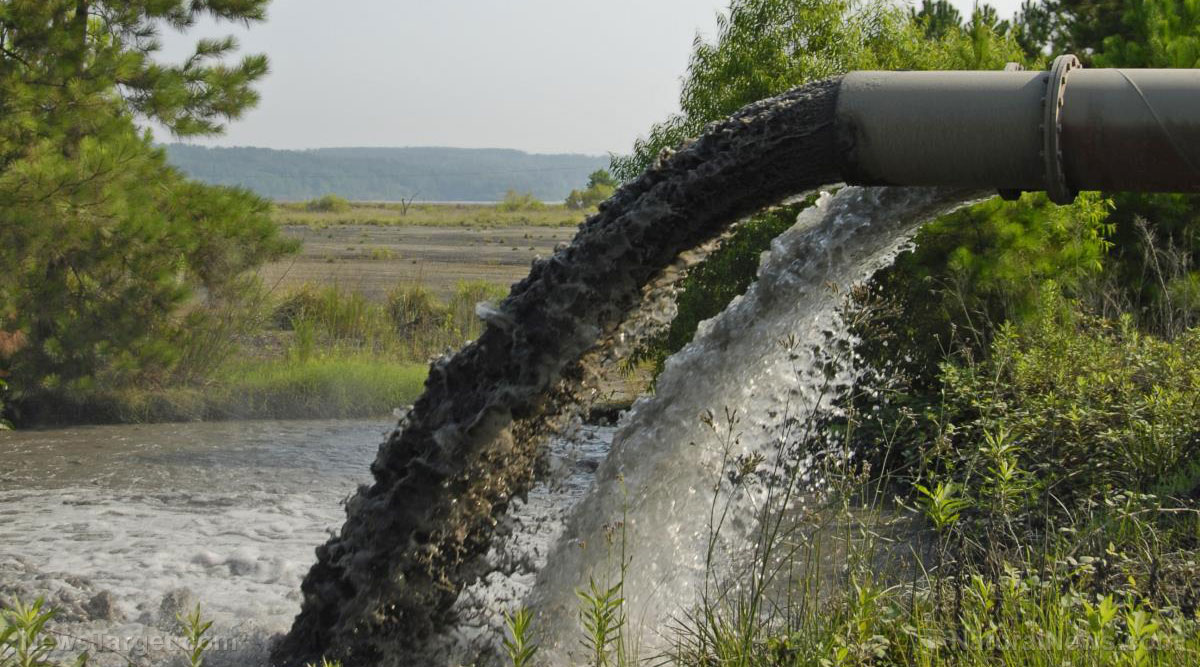
The Public Works Commission released its annual report on the quality of water it provided during 2017. The city's water utility announced that its drinking water was free from GenX contamination.
However, PWC-provided water also contained levels of 1,4-dioxane that exceeded the safe limits established by the EPA in 2013. This tap water is drawn from the Cape Fear River. (Related: Chemical contamination discovered in water supply at North Carolina military base… experts warn this could be the first of many.)
For decades, 1,4-dioxane has been used as a solvent for industrial processes. It is also present in baby shampoos, bath soaps and gels, cosmetics, paint strippers, plastics, and varnishes.
Studies warned that prolonged exposure to the chemical could increase the chances for cancer. Ten drops of the stuff in a 10,000 gallon swimming pool (3.5 parts per billion) could cause one out of every 100,000 people who used that same pool to develop cancer.
The EPA therefore set a safe limit of 0.35 ppb for 1,4-dioxane. It also ordered municipal water systems to start checking their water supply for the industrial chemical.
Levels of 1,4-dioxane in Fayetteville water supply are through the roof
In the PWC's 2017 annual report, monthly tests revealed that the average level of 1,4-dioxane found in its water was 2.2 ppb, which exceeded the safe limit by more than 600 percent. One site showed more than 1,200 percent.
As bad as this sounds, it was even worse back in 2013, when levels could hit as high as 1,030 ppb in the Haw River that flows into the Cape Fear River. The contamination sharply dropped from 2013 to 2017 once researchers persuaded industries to stop dumping 1,4-dioxane into local water supplies.
However, 1,4-dioxane is not a federally-regulated contaminant. The EPA cannot enforce its health advisory and industries cannot be forced to quit using or dumping it. The same legal constraint applied to GenX.
Regarding the increase in 1,4-dioxane levels, a PWC spokesperson cited experts who believed a dry spell reduced the amount of water flowing through the river. The spokesperson added that preventing the pollutant from contaminating water sources was faster and cheaper than trying to remove it from existing supplies.
Municipal water systems can't handle industrial wastewater
Environmentalists like Kemp Burdette of the Cape Fear River Watch explained that municipal water systems are contracted to treat the wastewater from industries. However, the municipal systems aren't capable of filtering industrial-grade contaminants from the water.
To make things worse, treated wastewater produces toxic sludge that contains chemicals like 1,4-dioxane. This sludge is dumped in landfills and ends up running off into streams.
Researchers like Dr. David Andrews of the Environmental Working Group (EWG) hold industries in the Triad region responsible for the contamination of Fayetteville's water supply. Andrews said 1,4-dioxane has been linked with kidney and liver conditions in addition to cancer.
In a 2017 study that covered 1,4-dioxane levels in public drinking water, the EWG identified Fayetteville as one of the four sites with the highest levels of the contaminant. The study used the results of the PWC's water tests in 2013.
GenX and 1,4-dioxane are two of the "emerging contaminants" that remain outside of the EPA's legal jurisdiction. Hundreds or even thousands of these industrial chemicals are being produced, used, and discharged by facilities like the Chemours chemical plant situated downstream of Fayetteville.
Keep abreast with the latest developments on clean and polluted water at CleanWater.news.
Sources include:
EPA.gov [PDF]on #waterhealth #toxicwater
Please contact us for more information.























